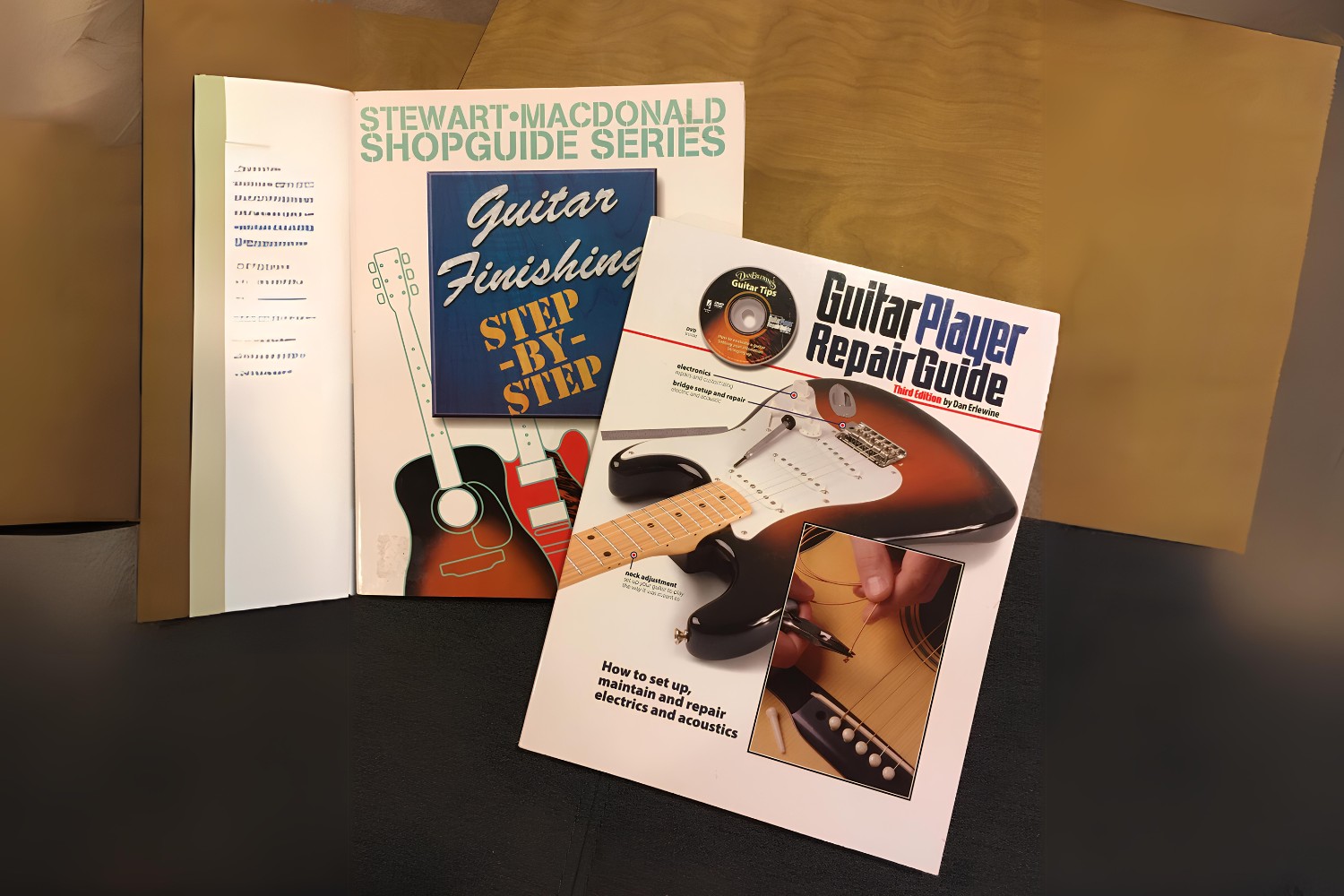Introduction
Introduction
Learning to play the electric guitar can be an incredibly rewarding and fulfilling experience. Whether you're a complete beginner or have some experience with acoustic or classical guitar, mastering the electric guitar opens up a world of musical possibilities. While there are various ways to learn, using books as a resource can be an effective and convenient method for many aspiring guitarists. In this article, we'll explore how you can use books to learn and improve your electric guitar skills.
Books offer a structured and comprehensive approach to learning the electric guitar, covering everything from basic chord progressions to advanced techniques. They often provide valuable insights, exercises, and music theory knowledge that can significantly enhance your playing abilities. Additionally, books allow you to learn at your own pace and provide a valuable reference that you can revisit whenever needed.
Whether you prefer to learn independently or supplement your lessons with a teacher, the right book can serve as a valuable companion on your musical journey. In the following sections, we'll delve into the key aspects of using books to learn electric guitar, including selecting the right book, understanding music theory, mastering basic techniques, practicing with backing tracks, and developing your unique style. By the end of this article, you'll have a clear understanding of how books can be an invaluable tool in your quest to become a proficient electric guitarist.
Choosing the Right Book
Choosing the Right Book
When embarking on your journey to learn the electric guitar through books, selecting the right instructional materials is crucial to your success. With a myriad of options available, it’s essential to consider several factors to ensure that the book aligns with your learning style, skill level, and musical preferences.
1. Skill Level: Before purchasing a book, assess your current skill level to determine whether you are a complete beginner, an intermediate player, or an advanced guitarist. Many books are tailored to specific proficiency levels, ensuring that the content is appropriately challenging and engaging.
2. Musical Genre: Consider the musical genres that resonate with you. Whether you’re drawn to rock, blues, jazz, or metal, there are books catering to various styles. Opting for a book that aligns with your preferred genre can make the learning process more enjoyable and relevant to your musical aspirations.
3. Comprehensive Content: Look for books that offer a comprehensive approach to learning the electric guitar, encompassing music theory, technique development, chord progressions, scales, and improvisation. A well-rounded book will provide a holistic understanding of the instrument and its application in different musical contexts.
4. Author Credibility: Research the author’s background and credentials to ensure that the book is authored by a reputable and experienced guitarist or music educator. A credible author can instill confidence in the accuracy and effectiveness of the instructional material.
5. User Reviews: Before making a purchase, explore user reviews and testimonials to gauge the effectiveness and user-friendliness of the book. Real-life experiences shared by other guitarists can offer valuable insights into the book’s strengths and potential drawbacks.
By carefully considering these factors, you can make an informed decision when choosing a book to guide your electric guitar learning journey. The right book will not only equip you with essential knowledge and skills but also inspire and motivate you to progress as a guitarist.
Understanding Music Theory
Music theory forms the foundation of musical understanding and proficiency, and it is particularly crucial for aspiring electric guitarists. When learning the instrument through books, gaining a solid grasp of music theory can significantly enhance your playing abilities and overall musicianship. Here’s how books can aid in comprehending essential music theory concepts:
1. Notation and Terminology: Books often provide clear explanations of musical notation, including staff notation, tablature, chord symbols, and rhythmic patterns. Understanding these elements is fundamental to reading and interpreting music, allowing you to play a wide range of musical pieces with accuracy.
2. Scales and Modes: Many instructional books elucidate scales, modes, and their applications in various musical contexts. Learning these foundational elements empowers you to improvise, compose, and understand the harmonic structure of songs, ultimately fostering a deeper connection with the music you play.
3. Chord Construction and Progressions: Books often delve into chord construction, progressions, and harmonic analysis, equipping you with the knowledge to construct and interpret chords and chord progressions. This understanding is invaluable for rhythm guitar playing and songwriting.
4. Ear Training and Aural Skills: Some books incorporate ear training exercises and aural skill development, honing your ability to identify pitches, intervals, and chord qualities by ear. These skills are essential for playing by ear, transcribing music, and improvising with confidence.
5. Applied Theory in Performance: Books may demonstrate how music theory concepts are applied in real-world performance scenarios, providing practical insights into soloing, rhythm playing, and musical expression. Understanding the theoretical underpinnings of music enhances your interpretative skills and fosters a deeper appreciation of the art form.
By immersing yourself in the theoretical aspects of music through instructional books, you can develop a robust foundation that empowers you to approach the electric guitar with confidence and creativity. Embracing music theory not only enhances your technical proficiency but also nurtures a deeper understanding and appreciation of the music you create and perform.
Learning Basic Techniques
Mastering fundamental techniques is pivotal for any aspiring electric guitarist, and instructional books offer a structured approach to learning and refining these essential skills. Whether you’re a novice or seeking to solidify your foundation, books can guide you through the following fundamental techniques:
1. Proper Posture and Hand Placement: Books often provide detailed guidance on achieving the correct posture and hand positioning to optimize comfort, dexterity, and minimize the risk of strain or injury. Understanding proper ergonomics is crucial for long-term playing enjoyment and physical well-being.
2. Picking and Strumming Techniques: Instructional materials typically cover various picking and strumming techniques, including alternate picking, economy picking, fingerstyle, and palm muting. These techniques lay the groundwork for rhythmic precision and dynamic expression.
3. Chord Formation and Transitions: Books offer systematic approaches to learning common chord shapes, chord progressions, and smooth transitions between chords. Developing proficiency in chordal playing is essential for rhythm guitar and accompaniment in diverse musical styles.
4. Scale and Fretboard Navigation: Many books elucidate scale patterns, fretboard navigation techniques, and exercises to enhance your fluency across the fretboard. This knowledge is fundamental for improvisation, lead guitar playing, and understanding the musical geography of the instrument.
5. Bending, Vibrato, and Sliding: Instructional resources often delve into expressive techniques such as bending, vibrato, and sliding, providing insights into executing these embellishments effectively and tastefully. These techniques contribute to the emotive and dynamic qualities of your playing.
6. Basic Music Notation and Tablature: Books typically introduce music notation and tablature, enabling you to read and interpret musical pieces accurately. This proficiency opens up a vast repertoire of music for you to learn and perform.
By immersing yourself in the foundational techniques outlined in instructional books, you can cultivate a strong technical foundation and a versatile skill set that forms the bedrock of your electric guitar prowess. Consistent practice and application of these techniques will pave the way for your continued growth and musical exploration as an electric guitarist.
Practicing with Backing Tracks
Utilizing backing tracks as a practice tool can significantly elevate your playing and musicianship, and instructional books often integrate this approach to enhance the learning experience. Backing tracks, which consist of recorded accompaniment without the lead instrument, offer a dynamic and immersive way to hone your skills. Here’s how books can guide you in effectively practicing with backing tracks:
1. Rhythmic Precision and Timing: Books may provide backing tracks with diverse rhythmic patterns, tempos, and time signatures, allowing you to refine your sense of timing and groove. Practicing along with these tracks cultivates a strong rhythmic foundation and enhances your ability to lock in with the music.
2. Melodic Phrasing and Soloing: Some instructional materials feature backing tracks tailored for soloing and melodic improvisation, providing a musical canvas for you to explore and develop your phrasing, expression, and improvisational vocabulary. These tracks encourage creative experimentation and musical dialogue.
3. Application of Techniques in Context: Books often accompany lessons with backing tracks that contextualize specific techniques, allowing you to apply newly acquired skills in a musical setting. This practical application reinforces the relevance and utility of the techniques you’re learning.
4. Ear Training and Harmonic Awareness: Backing tracks can facilitate ear training by immersing you in harmonic progressions, chord changes, and tonal centers. This immersive experience enhances your ability to recognize chord progressions by ear and navigate different tonalities confidently.
5. Performance Simulation and Musical Interaction: Practicing with backing tracks simulates the experience of performing with a band or ensemble, fostering musical interaction and responsiveness. This dynamic practice environment prepares you for real-world performance scenarios and cultivates ensemble playing skills.
6. Genre-Specific Exploration: Books may offer backing tracks across various musical genres, allowing you to explore and internalize the stylistic nuances and conventions of different musical styles. This exposure broadens your musical vocabulary and versatility as a guitarist.
By incorporating backing tracks into your practice regimen as recommended in instructional books, you can develop a well-rounded skill set, heightened musical sensitivity, and a deep understanding of musical context and expression. This approach enriches your practice sessions and nurtures a holistic approach to musical growth and development.
Developing Your Own Style
As you progress in your electric guitar journey, cultivating your own unique style and musical identity becomes a compelling aspiration. Instructional books play a pivotal role in guiding you toward this artistic development by offering insights and strategies for honing your individuality as a guitarist. Here’s how books can aid in the process of developing your own style:
1. Musical Influences and Analysis: Books often encourage you to study the playing styles of influential guitarists across genres, providing analytical perspectives on their techniques, tonal choices, and expressive nuances. This exploration broadens your musical palette and inspires creative amalgamations of diverse influences.
2. Composition and Songwriting Techniques: Instructional materials may delve into composition principles, songwriting structures, and harmonic approaches, empowering you to craft original music that reflects your artistic vision. Understanding these elements fosters the articulation of your musical ideas and emotions.
3. Embrace Uniqueness and Experimentation: Books advocate for embracing your idiosyncrasies and encouraging experimentation with unconventional playing techniques, effects, and sonic textures. This mindset nurtures innovation and the discovery of your distinct sonic footprint.
4. Expressive Techniques and Articulation: Instructional resources often emphasize expressive techniques such as vibrato, bending, slides, and dynamic phrasing, guiding you in infusing your playing with emotive subtleties and articulative nuances that reflect your personality as a guitarist.
5. Genre Fusion and Cross-Pollination: Books may prompt exploration of genre fusion and cross-pollination, encouraging you to blend elements from different musical genres to create a hybrid style that embodies your diverse musical interests and inclinations.
6. Performance and Interpretative Choices: Instructional materials may offer guidance on interpretative choices, stage presence, and personal expression during live performances, empowering you to communicate your musical narrative with authenticity and conviction.
By immersing yourself in the guidance provided by instructional books, you can embark on a journey of self-discovery and artistic refinement, culminating in the cultivation of a distinctive and compelling musical identity. Embracing your individuality as a guitarist not only enriches your playing but also contributes to the diversity and vibrancy of the musical landscape.
Conclusion
Embarking on the path to mastering the electric guitar using instructional books opens a world of musical exploration and growth. These resources serve as invaluable companions, offering structured guidance, comprehensive knowledge, and creative inspiration as you navigate the intricacies of the instrument. From selecting the right book tailored to your skill level and musical preferences to delving into music theory, foundational techniques, and the development of your unique style, the journey of learning through books is both enriching and empowering.
As you absorb the wealth of information and practical exercises presented in instructional books, remember that consistent practice, experimentation, and a spirit of curiosity are essential ingredients for progress. Embrace the challenges, celebrate your milestones, and remain open to the vast possibilities that the electric guitar affords. Whether you aspire to become a proficient session guitarist, a captivating performer, or a prolific songwriter, the knowledge and skills gleaned from instructional books will serve as the building blocks of your musical prowess.
Furthermore, the utilization of backing tracks as a practice tool can elevate your playing to new heights, fostering rhythmic precision, melodic expression, and harmonic awareness. Embracing this immersive practice approach not only hones your technical abilities but also nurtures your musical sensitivity and responsiveness, preparing you for diverse performance scenarios.
Ultimately, as you progress on your electric guitar journey, remember that the goal is not merely to replicate the playing styles of others but to cultivate your own artistic voice and musical identity. Drawing from diverse influences, embracing experimentation, and honing your expressive techniques are pivotal steps in this transformative process.
May your pursuit of electric guitar mastery through instructional books be marked by perseverance, creativity, and an unwavering passion for music. As you navigate the pages of these invaluable resources, remember that each practice session, each new concept grasped, and each original idea cultivated brings you closer to realizing your full potential as an electric guitarist. Embrace the journey, savor the learning process, and let the music you create resonate with authenticity and boundless creativity.

























